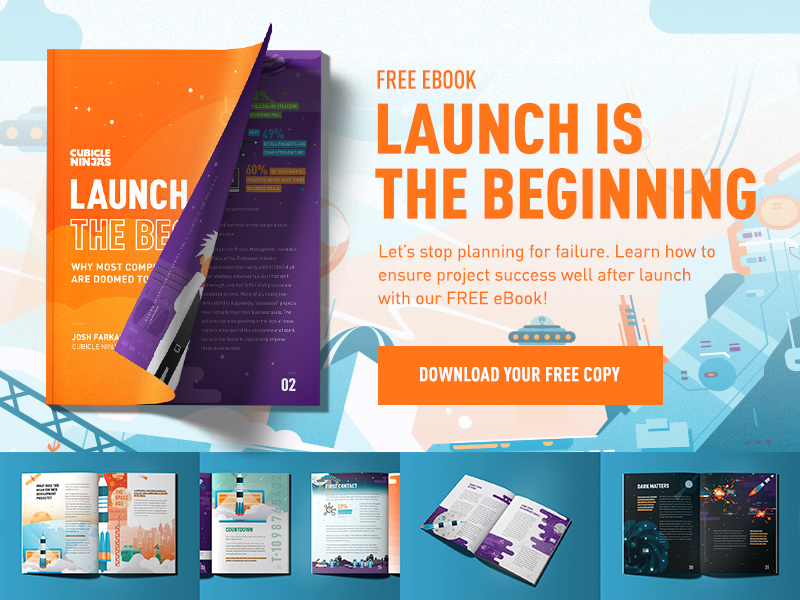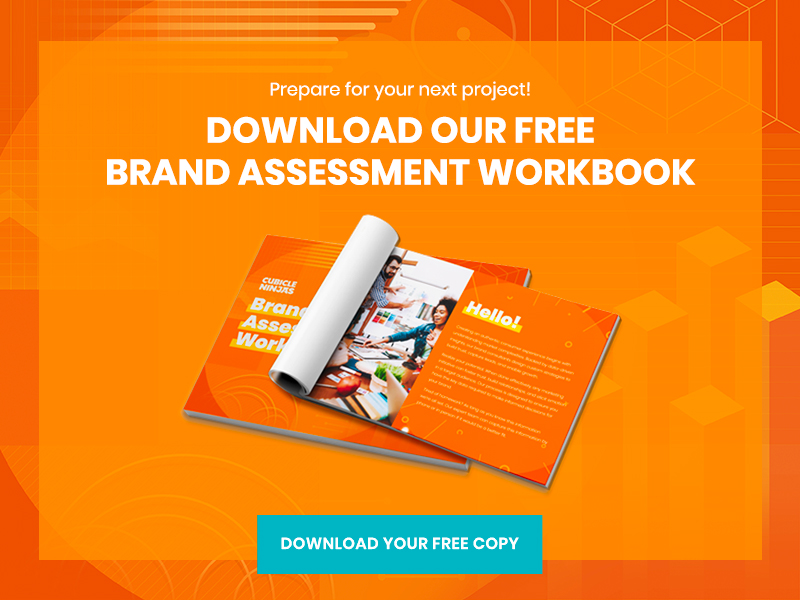
How to Run an Effective Meeting 101
What are your meeting horror stories? We’ve all got them! Maybe it was a meeting you attended where the speaker kept having technical difficulties. Perhaps it was one you had to run that you were ill prepared for. For several avoidable reasons, some meetings are just doomed even before they start. Let’s look at several reasons why some creative meetings just don’t succeed, and how to run an effective meeting.
What Are Common Meeting Pain Points?

1. Bad Meeting Leaders
If anyone utters “just one more minute” or “let me find this” you’re in the hands of the disorganized. Poorly run meetings can be boring, frustrating and downright exasperating for attendees. The subject might be interesting, or even downright essential for future business, but it is lost in a sea of inefficiency. When a meeting is inefficient, tons of time is lost in the lack of agenda, poor pacing, side conversations, incompetent leadership, and the deliberate derailing of the meeting by participants who are in attendance. When running a meeting organization matters.
How to fix a poorly run meeting: call out the elephant in the room early, asking to reschedule until they’re prepared. This acknowledges that your time matters while highlighting their need to prepare in advance.

2. Time Vampires
You know what these are like. Have you ever been to a meeting that is a deliberate destruction of productivity. Instead time might be well spent on important matters, if you weren’t tied up in this meeting! When something that could be said in 30 seconds or by email gets an hour stage, you’re living inside an enthusiasm blackhole.
How to stop a time vampire: begin the meeting by mentioning a hard stop at a scheduled time. This forces the conversion to be as focused as possible, giving you an out should it overflow.

3. Meetings with No Clear Intent
Admit it. You’ve attended meetings where you have no idea about the goals—and you’re sure the presenter also doesn’t have any idea what he or she hopes to accomplish. Diana Gabriel points out that a meeting should aim to reach an agreement, make a decision, or arrive at a solution. She states that if the meeting’s goal is not one of these three then it is doomed to be unproductive and of little value.
How to fix a meeting with no clear intent: propose that all meetings have an agenda. It needn’t be a novel, but just enough of an outline to understand the decision under review.

4. Meetings Lacking Context
Here’s the scenario: someone has been “brought in” from a private consulting company to discuss a topic like computer networking or retirement planning or company benefits package. It becomes apparent almost immediately that their information is general and not specific to you or your company. They present a canned presentation complete with splashy but useless PowerPoint slides and purposely dodge specific questions. The entire meeting is a waste of time and if you could only imagine how much these people are getting paid.
How to fix a meeting lacking context: share your honest thoughts when asked “what you think”. The only way businesses will build more engaging sales conversations is when they understand the financial cost.

5. Bad Speakers
The presenter is a pleasant person. He or she knows the topic inside and out. However, speaking to an audience or addressing a team is not this person’s forte. Consequently, both the presenter and the participants are uncomfortable. Not a lot gets accomplished because the presenter just does not know how to present their ideas in a clear manner. However effective this person is in the field, he or she is a fish out of water when it comes to public speaking.
How to fix a bad speaker: often the worst speakers are the best subject matter experts. Aim to properly pair a good communicator and a knowledgable resource so they can both shine.

6. Technological Failure
The presenter knows his topic. He’s a good speaker. But, somehow, he’s a luddite when it comes to using even the simplest audiovisual aids. Machines malfunction. Software won’t stop crashing. Materials are left behind. Costly equipment falls off the stand. It’s like every day is Friday the thirteenth for this poor human.
There are dozens of other meeting horror stories. But we don’t need to dwell on them. My point is: we’ve all attended meetings which were—for one reason or another—unproductive. We ultimately leave with a sense of wasted time.
How to fix technological failure: for a big presentation, plan in a 10-minute set-up. This allows those in the meeting to walk in to a live conversation, not an IT catastrophe.

7. An Unprepared Audience
When participants come to a meeting unprepared, they waste valuable time getting up to speed during the meeting itself. This can be avoided by providing materials and specific instructions for what participants need to do, read, collect, think about and have with them when they enter the meeting room. If this is not happening, it falls on the person running the meeting to make sure it does.
How to fix an unprepared audience: providing better pre-meeting information and more focused rules about what participants need to do to prepare may be required. It may mean a quiet chat before or after a meeting with someone who wasn’t prepared about why this occurred. Actually, getting face-to-face with those who are coming to the meeting and asking if there are questions is a great idea. This serves as a reminder a day or so before the meeting that they have a task to complete before the meeting.

On the other end of the spectrum, let’s look at what makes a meeting productive and how to run an effective meeting.
How to Run An Effective Meeting
Even though many of us detest meetings, we have to admit that they are needed if you want a team committed to productivity, shared decision-making and a collaborative environment. Because meetings are expensive in both dollars and work time, it’s important that they be productive.
How can you assure every meeting is effective? Forbes recently polled people at all levels of the work force. This is what they discovered when they asked: What makes a meeting productive?

1. Plan Ahead
Productive meetings don’t just happen. Like a well-executed family dinner, these meetings are carefully orchestrated. Presenter Diana Gabriel points out that a meeting succeeds because it is preceded by meticulous planning. Effective meetings have intent, focus, and structure.

2. Tell Them Why They’re There
Do not leave attenders puzzled about why they’re there. Set a clear time-based agenda. Send out a memo stating why you’re holding this meeting and what you hope to accomplish. Be clear and succinct. Share the agenda in advance. Tell participants what they need to do and what they should bring to the meetings. Touch base before a meeting to remind participants what they need to do.

3. Encourage Participation
When thinking about how to run an effective meeting, we suggest that it should involve participation—not being talked at. Just like the other areas of a work environment, a productive meeting gets those attending into team mode, rolling up their sleeves to get involved.

4. Be Selective
Invite only essential members. Don’t get caught up in worrying about office politics and whose feelings might be hurt by not being invited. Ask those whose input is crucial. Let the others stay where they can be productive. Remember: The more who attend the less effective a group is at reaching its goal.
If you aim at a one-item agenda and a short meeting, you can be very selective about who needs to be there to accomplish the decision, agreement, or action you are seeking. Participants will then become accustomed to being asked—or not asked—to a single-item meeting.

5. Time Items Carefully
Meetings don’t need to go on and on just to fill an afternoon. Consider using technology to hold a video meeting so that participants can attend from wherever they are. Make participants aware of how long the meeting is going to be and how long you will spend on each item.
Research for Harvard Business shows that a thirty-minute meeting is often as effective as a half-day meeting.

6. Consider Logistics
If travel is involved or if your participants must get connected remotely or even if it’s a matter of passing out materials or serving coffee or checking attendance, make sure to build in sufficient time for this. A meeting that starts exactly on time is off to a good start.

7. Ban High-Tech Presentation Techniques
Have you ever been to a meeting where the presenter reads from their notes? Technology (videos, graphics, charts, slides…) should be used to emphasize a point. They should not be the presentation itself. Too often presenters put their audience to sleep by reading an entire manifesto. This is insulting to your participants and a waste of time, as it is a lecture not a conversation.

8. Consider the Setting
The boardroom is not always the best place for a productive meeting. Perhaps the plant floor is better if you need to refer to sites or want to remind participants about product or technique. Think about outdoor venues, teleconferencing, walk-and-talk. Getting out of the office often stimulates ideas.
The culture of the meeting can often be enhanced by considering a setting that is not as stiff as a boardroom.

9. Add Some Social Stimulation
No. I am not talking about hitting the bar or bungee jumping. That said, an ice breaker or a short trivia contest loosens up the group. It may also be a boon in team building and a stimulate conversation.
Meeting environment is vital. If you’ve got a bunch of people who are not thrilled to be there and feel there is no purpose served, your meeting is doomed. Getting people actively involved often builds a spirit of camaraderie.

10. Have an Unplugged Meeting
Most people who attend meetings—regardless of age—are glued to their handheld devices. Lead by example. Come without your electronic equipment and request that others do the same. Here’s why: Research by James Doubek shows that learners with electronic devices remember less than those who merely listen and those who take notes using a pen and a notebook.

11. Technology is Efficient but…
Admit it! You’ve let your mind wander during conference calls, virtual meetings, and teleconferences, haven’t you? A study discovered that almost 70% of participants are doing other work when they are “attending” a teleconference or a conference call. Another study showed that participants have actually gone to the bathroom or for a coffee or a snack during a technologically-staged meeting. Steven Key says that there’s no substitute for face-to-face meetings.

12. Lead with Your Goal and Close with Recap
Start with a focused goal. Conclude by reviewing your original aim. Reiterate your key points. This is a where PowerPoint can shine.

13. Be Goal-Oriented Not Politically Driven
Let’s face it. Too many meetings are about ass covering. People are invited not because of their contributions but because it’s good to be seen with them. If you want to accomplish something invite those who you know will help you do so. The meeting’s focus should be on that clearly worded objective you opened with.

14. Hold Participants Accountable
There was a clearly worded objective for your meeting. You carefully prepared an agenda. You invited those who would help you accomplish your goal. Now be productive. Start on time. Follow your agenda. Keep the meeting on time. Stick to the plan. If participants were expected to come prepared, note those who were not and speak to them privately. Tell those in attendance why you need them and how they can help you achieve the stated objective.
Make them contributors of what was decided, and action taken, a decision made, a goal achieved. This sharpens participation. It also makes for fewer, less frequent meetings to share what went on.

15. Less is More
Acknowledge that the time of those you’ve asked to be part of this meeting is valuable. Let them know that you understand they’ve got other pressing issues. Don’t waste their time. Don’t just fill time to kill time.
More frequent and shorter meetings frees up participants to return to their other work. Long meetings are often unproductive because too much is crammed into one meeting. One CEO advocated twenty-minute, one-item agendas and had the stats to prove these short, focused meetings worked. If this is combined with inviting only those essential to that particular agenda item, participants soon learn they are being included because they have something vital to contribute and they won’t be long away from their other duties.

16. Think of Effective Ways to Share Information
Top down is not always the best way to share information. Productive meetings address how information can be shared, by whom, and how. This form of sharing also reinforces the outcomes with those tasked with sharing it back with their teams. And it eliminates the need to have yet more meetings to share information. There’s another benefit: If you know it may be your responsibility to take the information back to your team, your listening and participation become instantly more focused. You’re now no longer just a listener. You’re a contributor of strategies, data. You’re an agent of change.

17. Engage Passengers
Adam Pittampalli explored why meetings become unproductive. He discovered that “passengers” are those who merely show up. They have no investment in the agenda other than what it can do for them with the least amount of their input. He hypothesizes that this arose long ago when our forefathers’ focus was on survival.
One way to ensure people invest of themselves is to make follow-up part of the meeting. Conclude the meeting not only with a recap of the objective and what was accomplished. List what needs to get done and who is responsible for each of these. Make sure everyone has a copy of that list. Check frequently to see how things are coming along and if there is anything further each participant needs.
Model involvement, objective-orientation, commitment and team spirit. Lead by example. Create a culture of accountability and the productive meetings will be sure to follow.
Looking For More Ideas To Improve Your Meetings and Presentations?
Does the thought of running a meeting make you squirm? Boost your confidence with these Tips for Better Public Speaking. Have a presentation coming up? Read up on these Top 10 Presentation Tips.














